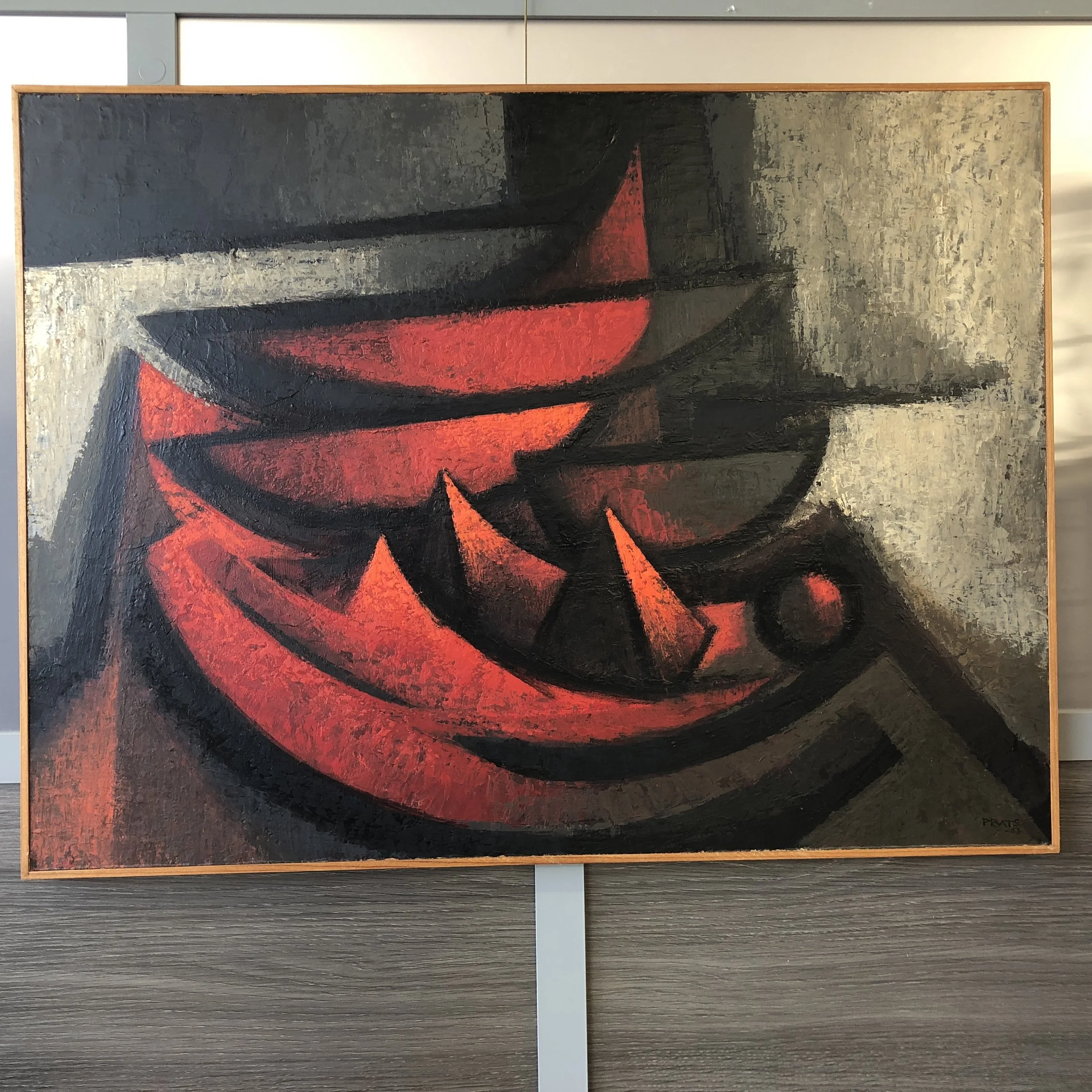Seeing in Shapes: A Look at Cubist Art Through Four Works
At Contact Modern, we celebrate the dynamic and layered world of midcentury art—and few styles capture that complexity quite like Cubism. Born in the early 20th century and evolving through the decades, Cubism broke away from traditional representation and asked us to see the world differently: fractured, abstracted, and filled with new energy.
Today, we’re lucky to have four powerful examples of Cubist work in the shop, each offering a unique interpretation of form, color, and movement.
Carlos Marin – Three Women
This expressive painting by Carlos Marin showcases his signature bold, geometric style. Three women, sculpted in color and form, convey stillness, strength, and connection. Marin’s work draws from Latin American modernist traditions, and this piece is a standout for its timeless beauty and compositional confidence. It’s an ideal example of how Cubism can capture emotional resonance through abstraction.
Carlos Marin – Still Life with Oranges and Bottle (1961)
In this vibrant still life, Marin applies his Cubist lens to a table scene: oranges, bananas, and a green bottle arranged on a bright orange tabletop. The color is electric, and the geometry is layered and kinetic. It’s a fresh take on a classical subject and a great example of how midcentury artists infused Cubism with their own cultural and regional identities.
Prats – Cubist Tablescape with Watermelon (1963)
With a single slice of watermelon, a vase, and a draped cloth, this 1963 painting by Prats distills the quiet poetry of everyday life into angular abstraction. The warm, earthy palette and carefully balanced composition reflect a refined Cubist approach, one that invites viewers to slow down and explore its shapes and textures.
Prats – Red Figures Still Life (1963)
In contrast, this second work by Prats brings energy and movement to the fore. Several red figures emerge from a complex background of fractured planes and muted tones, combining structure with spontaneity. The painting has a rhythmic quality that speaks to Cubism’s versatility and continued evolution into the 1960s.
Why Cubism Still Matters
Cubist art isn’t just about breaking things apart—it’s about seeing from multiple perspectives at once. Whether it’s a quiet table scene or a vibrant group of figures, Cubist artists challenge us to go beyond surface and understand the deeper structure of things. The works in our current collection—by Carlos Marin and Prats—remind us that abstraction can still feel grounded, emotional, and deeply human.
Visit the shop to see these works in person, and experience the bold vision of Cubism for yourself.





